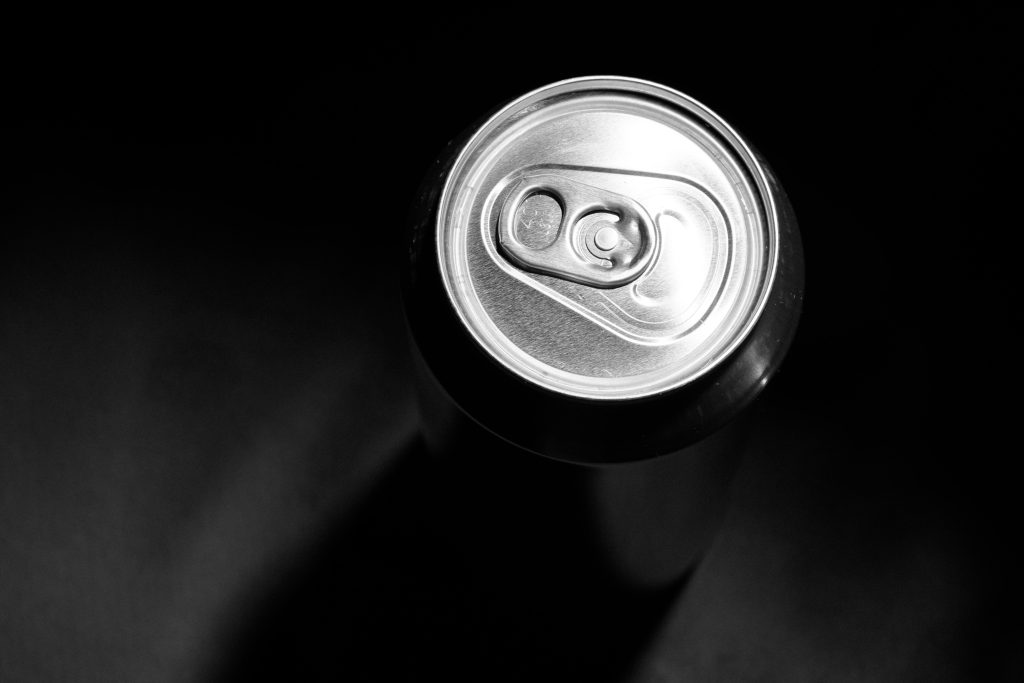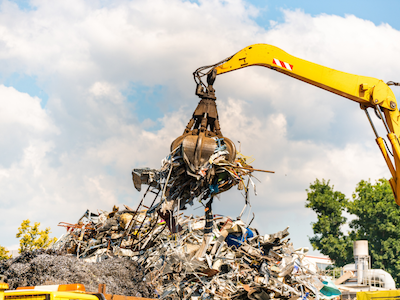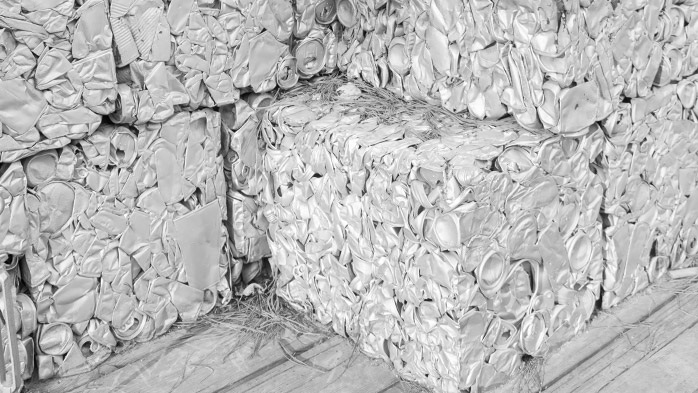Aluminum Scrap Markets

August 15, 2025
Means to an end: Novelis-DRT target 99% recycled content end stock
Written by Nicholas Bell
Novelis has entered a joint development agreement with DRT Holdings to accelerate the adoption of high recycled content aluminum alloys in beverage can ends.
The partnership will focus on refining manufacturing processes to enable “uni-alloy” designs that can incorporate up to 99% recycled content, reducing reliance on primary aluminum in end stock production for decarbonization purposes while cutting input costs.
High-speed ends
DRT manufactures high-speed end-making equipment capable of producing up to 3,000 ends per minute, positioning it as a key player on the mechanical side of adoption.
At 3,000 ends per minute, using an observed ratio of U.S. can production implied by CRU data coupled with end stock consumption figures, a single DRT high-speed line could produce just under 1.6 billion ends per year if operated 24/7. This implies annual end-stock demand of around 4,262 metric tons (mt) of annual end stock demand.
Notes on the margins
End stock is significantly more expensive to produce than body stock, both globally and in the U.S. CRU estimates the 2024 global average for corporate costs between end stock versus body sheet is around $1,482/mt. (CRU Group is AMU’s parent company.)
In the U.S. raw material costs alone averaged a difference of $221/mt. Finishing costs widen the gap further, with end stock expenses more than eleven times higher than finishing costs for body sheet.
Both demonstrate the time-intensive forming processes and additional hours of labor needed for end stock production, as well as the differences in alloy composition.
Special stock
Most end stock is made from 5182 alloy, which contains four to five times more magnesium than 3004 body sheet alloy. It also has higher tensile and yield strength and allows less than half the iron content.
The stricter impurity threshold makes it difficult to blend in lower-cost scrap streams such as used beverage cans (UBCs), which can be remelted for body sheet but not for 5182 end stock.
U.S. end stock production is concentrated among a small number of mills: Kaiser’s Warrick plant, Tri-Arrows/Novelis’ joint venture Logan Aluminum, Constellium’s Muscle Shoals facility, and Golden Aluminum in Colorado. Capacity varies widely – Logan’s output is about 70,000 mt/year lower than Kaiser’s and more than 150,000 mt/year above Golden Aluminum, according to CRU data.
‘End’ markets
Imports have risen sharply in recent years, but exports still outpace imports by a significant margin.
The U.S. imported 6,168/mt of end stock in 2024, according to data from the Department of Commerce, with 2024 shipments coming from just six countries, led by South Korea (4,077 mt), South Africa (1,688 mt), and China (373 mt). Smaller amounts arrived from India, Germany, and Vietnam. This marks a structural shift from earlier years when Greece’s ElvalHalcor was the dominant source of U.S. end stock imports.
Now, South Korean imports presumably come into the U.S. from Novelis’ South Korean facility, but are shipped out than imported. Otherwise, South African imports likely originate from Hulamin Aluminum.
Meanwhile, U.S. exports of end stock typically end up in Mexico and Canada – where a handful of canmaking plants are located, but no end stock or can sheet plants are located.
Can consumption
In 2024, CRU data shows U.S. end stock consumption at 309,149 mt, representing 16%-17% of total can sheet consumption.
Trade data shows that despite imports, most U.S. end stock is domestically sourced, as imports accounted for just 2% of consumption in 2024, compared with 17% of body sheet.
Net domestic availability (production + imports – exports) was 245,605 mt for end stock in 2024, meaning more than 63,000 mt of U.S.-produced end stock was exported that year. For body sheet, net availability was 1,458,876 mt.
The U.S. produced over 114 billion aluminum beverage cans (CRU). Dividing total production be end stock consumption yields around 370,000 cans per metric ton of end stock.
Content under pressure
According to the Aluminum Association, the average U.S. beverage can contains 73% recycled content – 43% from UBC scrap, 23% from post-industrial scrap, and 7% from non-UBC post-consumer scrap.
UBCs can be remelted into body sheet but cannot directly replace 5182 end stock. End stock production depends on Class II scrap from new-production 5182 alloy, which typically commands a premium over other classes. Class IV scrap refers to spoiled compounded ends.
USGS data indicates that 575,000 mt of UBCs were melted and consumed in the U.S. in 2024. Using the Aluminum Association’s figure that UBCs make up 43% of the entire can by weight, these volumes could yield roughly a little more than 1.3 million t of can body sheet. That calculation falls short of the more than 1.5 million mt of body sheet consumed in 2024, according to CRU data, meaning mills had to supplement with either more-than-average primary aluminum, post-9industrial scrap, and non-UBC post-consumer scrap.
Scrap plans
The shortfall has been a recurring constraint in the body sheet market and could pose a similar challenge for Novelis and DRT’s 99% recycled content goal for end stock.
The issue becomes more acute with Novelis’ Bay Minette mill coming online in the first half of next year and Aluminum Dynamics’ Columbus mill starting to ramp up production, especially as both are slated to produce beverage can sheet as well as automotive body sheet alloys, which are often made of high-magnesium-bearing 5XXX series alloy like end stock.
Automotive sheet scrap, along with end stock clippings, is a major magnesium-bearing aluminum scrap source suitable for 5182 alloy.
While 5XXX series alloy production in the U.S. is significantly smaller than body sheet, or even end stock, production, the post-industrial generation rates are already low. Combine that with the fact that you have at least double the number of mills chasing 5XXX and auto body sheet scrap, than those directly purchasing UBCs and you’ve got a highly competitive market.








